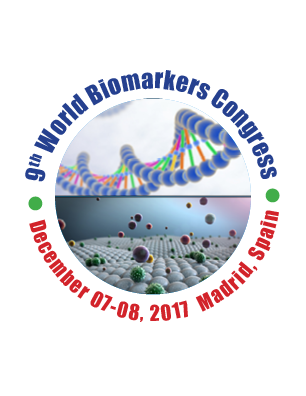
Topolcan Ondrej
Charles University, Czech Republic
Title: PHI and prostate cancer - optimal management
Biography
Biography: Topolcan Ondrej
Abstract
Background: Prostate cancer is the fi ft h leading cause of cancer death among men. More than one million cases are worldwide diagnosed every year, and the mortality is over 300,000 deaths per year. Prostatic specifi c antigen (PSA) is a serine protease composed of 240 amino acids in a single polypeptide chain. In serum, PSA is primarily bound to alpha1-anti-chymotrypsin (95% of total PSA), to a lesser extent to alpha2-macroglobulin. 10-30% serum PSA occurs in the free form (fPSA). Since the 80s of the last century, total level of prostatic specifi c antigen (tPSA) is used as a tumor marker in the prostate cancer diagnostics. Most of the prostate tumors are diagnosed using biopsy based on the elevated levels of PSA. It is also useful to determine the part of PSA called proPSA. This part of PSA is more produced by tumor cells. Based on the levels of PSA, proPSA, and free PSA, the prostate health index PHI can be calculated.
Aim: Demonstration of the usefulness of PHI in the management of prostate cancer patients.
Materials & Methods: Cohort of 1865 patients was evaluated. Th e total of 5800 biopsies, 1448 MRI and 150 PET/MRI were performed in this cohort of patients. 4900 samples with the results of PSA, fPSA, -2proPSA, fPSA/tPSA calculated results and PHI during the follow-up period. Gleason score was established in all patients.
Results: By comparison of AUC sensitivity for each laboratory parameter, PHI achieved the highest value (0.8118). PHI achieved also the best correlation with the Gleason score (G6-G9) which allows PHI to be a reliable marker of aggressiveness of the prostate cancer. An optimal PHI cut-off value was 31 with specifi city 20.4%, sensitivity 97.6%, PV+ 18%, PV- 97%, RR 8.7.
Conclusions: Determining PHI allows proposing the optimal diagnostic algorithm for prostate cancer, improvement of diff erential diagnosis of carcinoma vs. prostate hypertrophy, reducing biopsies and imaging techniques, more accurate prognosis estimation, optimizing the type of surgery, optimizing of the postoperative treatment and optimizing of follow-up.

